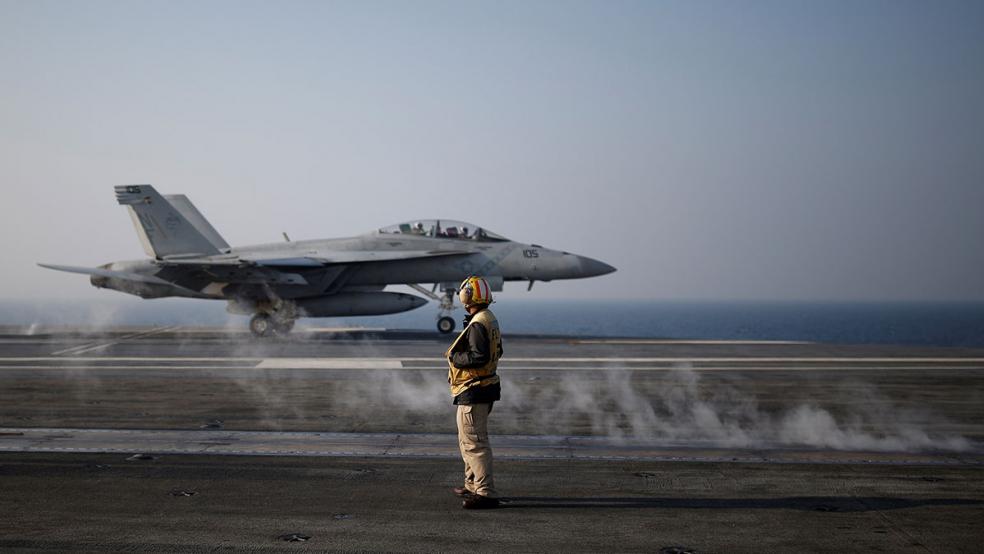Crew members in the cockpits of Navy F/A-18 Hornets and Super Hornets suffered oxygen deprivation almost 300 times over a period of more than five years. The number keeps climbing, and the Navy doesn’t know why.
In the latest reported incident, a Strike Fighter Squadron attached to the aircraft carrier USS George H.W. Bush suspended flights from July 12 to 19 after a series of what are known as physiological episodes (PE). The Navy Times said at least one of the 16 pilots in the squadron had to be placed in the carrier’s decompression chamber.
The grounding was first reported by Fox News.
Related: The F-35 Adds Oxygen Deprivation to Its To-Do List of Flaws to Fix
The F/A-18 isn’t the only aircraft with PE problems. In June, 55 F-35A Joint Strike Fighters at Luke Air Force Base in Arizona were grounded after five incidents in which pilots suffered oxygen deprivation.
In April, dozens of Navy instructors refused to fly T-45 Goshawks training jets because of toxic gas issues. And the Air Force’s $150 million F-22 Raptor was beset with oxygen problems in the past.
Hypoxia, as the oxygen deprivation condition is called, has long been a problem for military aircraft. It can cause nausea, dizziness or confusion — among other symptoms — endangering the lives of pilots hurtling through the air at hundreds of miles per house and putting the multi-million-dollar aircrafts in jeopardy. The price of Hornets and Super Hornets ranges from about $30 million to $60 million apiece, and F-35s can cost more than $120 million, depending on the model.
Related: 21 US Weapons That Could Stop North Korea
In late March, Bloomberg reported that incidents of hypoxia among pilots of F/A-18 Hornets and Super Hornets have been escalating for a year. It cited a memo prepared for Navy officials testifying before a House Armed Services subcommittee that said: “Since May 1, 2010, all models [of the F-18] show steady, yearly increases in the number of physiological episodes.”
Commander Mike Hecht, a spokesperson for Naval Air Forces Atlantic, told The Fiscal Times: “The situation is a mystery. The cause of these [PE] problems isn’t known.”
But, he added, the Navy is working feverishly to find solutions and consulting with other agencies, including NASA.
In testimony before the Senate Armed Services Committee in June, Vice Adm. Paul A. Grosklags, the commander of Naval Air Systems, said: “We’re not doing well on the diagnosis. To date, we have been unable to find any smoking gun.”
Related: F-18 vs. F-35: Why Is Trump Talking Up the Super Hornet?
Now, Hecht said, the Navy is appointing an admiral — Admiral (Select) Sara Joyner — as the full-time point person leading the search for answers.
In the incident involving Strike Fighter Squadron 37, which flies “legacy” F/A-18Cs, a single-seater aircraft, the delay lasted a week because parts in the environmental control system had to be replaced, Hecht said. However, he noted that with other strike squadrons on board, the grounding of the “Ragin’ Bulls” had “no impact on operations.”





